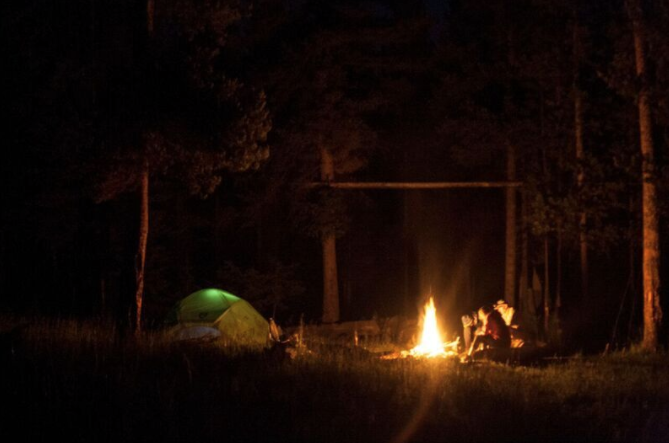Public Land: Bridger-Teton National Forest
Driving south from Yellowstone National Park in Western Wyoming, visitors drive through the awe-inspiring Bridger-Teton National Forest. The mighty snow-capped Tetons provide a scenic backdrop to the pine stands, open fields and meadows that make up the landscape. Defined by pristine watersheds and an abundance of wildlife, the Bridger-Teton National Forest offers nearly 1.2 million acres of designated Wilderness within 3.4 million total acres of public land. Thousands of miles of trails and roads provide easy access to the land. The Bridger-Teton National Forest is part of the Greater Yellowstone Ecosystem, the largest intact ecosystem in the Lower 48. Visitors can enjoy an array of recreation opportunities including hiking, camping, rafting, wildlife viewing and fly fishing. The Gros Ventre and the Snake River are two major waterways that attract visitors each season.
— Brett Winchel
Native Trout: Snake River fine spotted cutthroat trout.
The Snake River fine-spotted cutthroat trout is very closely related to the Yellowstone cutthroat trout. Genetically, the two cannot be separated and they co-occupied the same waters before the construction of man-made barriers. The two species are connected by Pacific Creek, which flows through the Two Ocean Pass in Yellowstone National Park. Snake River fine-spots are characterized by what their name entails, with hundreds of small spots decorating the majority of their bodies. Once native to the large valley lakes of Grand Teton National Park, today these fish live on the west side of the continental divide and are found throughout much of the upper section of the Snake River.
— Matt Crockett
Our Experience: Snake River Cutthroat in a Secret Lake.
Its funny being from Colorado. My home state offers almost every kind of trout angling possible. For me, these angling experiences basically come down to two things: technical tailwaters in the winter, and easy-as-pie alpine action in the summer. However, on this particular day in the Teton National Forest, I got the best and worst of both these worlds.
After a long night drive to our destination, we hastily set up camp at the banks of a lake that shall not be named due to a request from the local fly shop. That night we had not even the slightest visibility of the ominous black mass that daylight soon proved to be the lake. An antsy night’s sleep ended with the annoyance of an alarm, followed by sheer anticipation. I opened the rain-fly to see a clear glossy lake with not a blemish except for those caused by moving bugs and rising trout—just the image I was hoping for. Quickly, I put in my contacts, strung up a rod, and slung my pack over my shoulder. Brett was not far behind me, and we were the first ones to wet a line on the lake. We saw several cruising fish, which we identified as Snake River cutthroat trout. These fish were not only spooky, but they were not easily fooled. We quickly cycled through an array of nearly every dry fly known to man, yet not a single cutthroat had batted an eye to our offerings. At this point, we knew it would be a technical sort of day.
Brett took his first fish on a size 22 black midge strung to 7x, which I received as bleak news considering we weren’t anywhere near a tailwater. Eventually after no fish had taken my fly I branched off on my own and began exploring the lake perimeter. This is where my frustration soon reached its maximum, as I had spent at least half an hour sight-casting and being rejected by two different fish. At this lake if you made one bad cast, one wrong movement, or one wrong presentation the trout would immediately spook and jet out to the safer deep water. The hot sweat and denial this lake had supplied made my hopes nearly non-existent. Finally, I decided to switch to a larger sized scuddy-buggy looking fly. The first fish I casted to pursued the fly and ate it without hesitation, making the only hard part that of a stealthy approach. After the first fish, I got quite dialed in with my approach, presentation, and eventual hook-set. I ended up taking two more fish by scouring the shore, until I found THE spot. At the far end of the lake where the wind had reduced fish visibility, and where there existed a large crater in the lake bed, I saw about ten feeding cutthroat.
At this point I called over Brett and Matt, knowing we were in for a treat. Working our patterns in this area, we soon took six more beautiful and chunky Snake River cutthroat. What I got from this lake was the hard work of a tailwater, with the gratifyingly gorgeous reward of cutthroat trout. The work I put in to fishing this lake was completely worth it, and goes to show that just because the day starts out slow doesn’t mean it can’t end hot.
— Jacob Lacy



